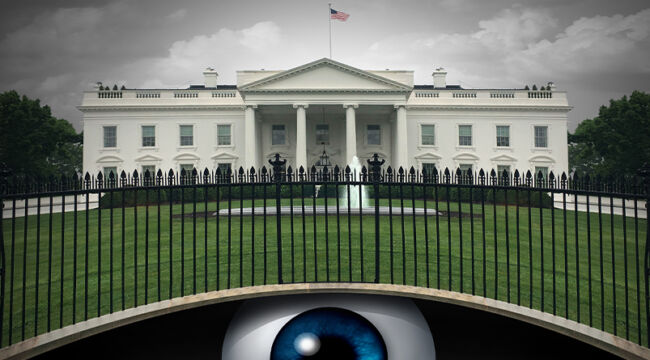Anatomy of the Shallow State
The state is a transformer that takes on different appearances in different ages, depending on resources, traditions, technologies and geography.
History chronicles theocratic despotisms, feudal lords, exploitative slavocracies, imperial autocracies, peaceful republics, small-scale democracies, divine-right monarchies, murderous party dictatorships and many more besides.
What is the 21st-century form of the state? There are plenty of opinions on this and the reality and change are still unfolding before us with dramatic upheavals and great resets.
But it seems to be some form of omnipotent managerial technocracy, as if to fulfill the most pessimistic predictions of 20th-century thinkers who saw this form developing after the Second World War.
In this system, the elected representatives of the people are reduced to bit players on the scene, marionettes whose main job is to keep up appearances that the systems of the past are still operating and that the voice of the people still matters.
In reality, the state consists of three distinct layers, which we can call deep, middle and shallow. All three play crucial roles to exercise and retain hegemony over the population domestically and globally.
The deepest layers are those that operate mostly out of the public eye thanks to legal protections for classified information. They are the security and intelligence agencies that overlap closely with what is centralized law enforcement.
In the U.S., this is inclusive of many agencies, including the FBI, DHS, CIA, NSA, NSC, CISA, and many more besides including all their cut-outs in the foundation world and private sector, some known and unknown. The term deep refers precisely to the clandestine manner in which they operate.
Next we have the layer of the middle state, mostly called the administrative state. In the U.S. this consists of 400-plus civilian agencies with 2 million and more employees with positions that are protected by union rules and federal legislation.
The elected president can appoint several hundred positions to head these agencies but all power and institutional knowledge belongs to the permanent bureaucracy, which knows that it wins all struggles. Political appointees come and go.
The most intriguing and least-discussed layer is the shallow state. This is the sector that is more consumer-facing, largely private in ownership often with publicly traded stocks and mostly enjoys a trusted reputation among the general population.
They both comply with edicts but also have a huge voice in shaping them. The shallow state consists of name brands and lobbies in every industry including medicine, pharmaceuticals, media, digital technology, energy production, transportation and national defense.
I break it all down for you below. Read on.
The Shallow Part of the Deep State
By Jeffrey Tucker
Some sectors of the shallow state are fairly obvious: Boeing, Lockheed Martin, General Dynamics, Raytheon and Northrop Grumman.
Less obvious are other direct beneficiaries of government largess and legal protection that engage in ubiquitous advertising such as Pfizer and Moderna and many other pharmaceutical companies. Their gigantic advertising budgets keep their possible critics in mainstream media and the arts venues at bay.
A company like Amazon, which everyone loves, benefits from many billions in government contracts. For example, in July 2021, Amazon Web Services was awarded an estimated $10 billion contract by the National Security Agency.
Six months later, the company won a $724 million contract with the U.S. Navy’s commercial cloud environment. At the same time, the company was chosen as the main host for the Joint Warfighting Cloud Capability contract with a possible value of $9 billion.
It’s not just the contracts; it’s the benefits obtained by coercive controls of the population. Amazon and all streaming services, in addition to online learning platforms, benefited mightily from the closures of millions of small businesses from 2020 onward.
These closures, and the division of the entire workforce into essential and nonessential, in addition to vaccine mandates, were implemented by the human resources division within all medium and large companies. HR serves as a shallow-state enforcement arm of medium-state and deep-state policies.
Many media venues should be considered part of the deep state, essential to the manufacturing of consent. On Feb. 25, 2020, Dr. Nancy Messonnier of the CDC (sister of the FBI’s Rod Rosenstein, whom Trump pressed to fire the director) called a press conference with top reporters at The New York Times, The Washington Post and so on, and let them know that lockdowns were coming. All these venues hopped to it and reported exactly this with breathless hysteria about the coming virus.
No one at the CDC asked the Trump administration; it simply barrelled ahead as if the elected layer doesn’t matter. The country flew into a frenzy, and all major media venues promptly got into the information-censoring business, first with the topic of the lab leak, then with masking, then with social distancing and finally with the vaccines.
They might as well have acted from start to finish as government agencies, and the same goes for Facebook, the old Twitter, LinkedIn and so on.
This is all emblematic of shallow-state behavior.
But it hardly stops there. It includes seemingly innocuous and important sellers of products like milk, which is baked by the dairy lobby, which works closely with the Department of Agriculture.
In recent months, the feds have worked with state-level departments to crack down on organic farms that sell raw milk and other raw dairy products. They raid the places, take their stuff and issue cease-and-desist letters. The mainstream dairy lobby has backed this consistently for years as a means of monopolizing the market and clearing out the competition.
One would never think of an innocent gallon of milk as a product or participant in shallow-state activities but there we are. And these actors are routinely backed by shallow-state press outfits like The New York Times, which recently tried to convince readers that drinking and advocating for the right to sell raw milk is necessarily “right-wing,” even though decades of history of this issue are solidly identified with the left.
We might also consider your family doctor, who, we now know, is paid bounties on the number of vaccines pushed on patients, in addition to other pharmaceutical products, many funded by the NIH and approved by a pharma-captured FDA.
This is a reflection of state policies, and the final point of sale is the most trusted source, the nice person in the white coat you pay to see. Is this part of the shallow state too? Under some conditions, this would be a correct assumption.
The capture of the tech industry by government agencies (or the reverse) has been astounding to watch. When Microsoft started getting contracts for public school computing in the 1990s, no one thought anything about it. Fast-forward 30 years and the same company has a close partnership with the Department of Defense including a $10 billion contract for cloud computers and a $21.9 billion one to produce augmented reality devices for the U.S. Army.
So when it came time for Microsoft to step up and push lockdowns, very much a biodefense operation, it was all in on its platforms, including of course LinkedIn. So it is throughout the industry.
Let’s talk about finance. If you think of the Federal Reserve’s secretive side as the deep state, the financial and monetary regulators at Treasury as the middle state, can we think of banks and financial institutions like BlackRock and even Goldman Sachs as part of the shallow state?
Most certainly. That’s how the system works, with every company drafted into the comprehensive system of compulsion and coercion.
When comprehensive controls of the population come about through financial cancellation based on politics, it will happen most directly via these shallow-state institutions that are merely following orders coming from below. The consumer will never know who gave the order or why.
Consider finally the universities. Academia was not only silent as the total state seized control in 2020 and following. It was actively participating, treating paying students like inmates with room confinements, forcing masking and then forcing shots no one needed. Two graduating classes were robbed of normal experiences. The professors and administrators who spoke out experienced derision, exclusion and even termination.
Some private liberal arts colleges resisted heroically, but the high-status institutions both public and private were thoroughly complicit. Shallow state? Certainly.
Think about this from the point of view of the planning apparatus of a technocratic managerial state. What is the most viable path to comprehensive and sustainable control of the population?
Ideally, you want to move all political priorities up the chain of production from the deep state through the middle state and finally deployed by the shallow state and directly to the consumer in a market-driven economic structure.
This helps disguise the compulsion and makes it possible to present every egregious cartelization policy as nothing other than an extension of human choice and therefore entirely voluntary.
Note too how incapable are traditional ideological structures at comprehending the fullness of the corruption much less how the system operates.
The left thinks of government and public institutions as serving the people rather than serving the rich and well-connected but the opposite is true: They depend on and ultimately serve the most well-heeled corporations.
The right thinks of the private sector as scrappy and independent but the reality of vast amounts of enterprise is that it depends on, celebrates and manages government control. The libertarians continue to imagine market/state binaries that exist in theory but not in reality.
We really do need a more realistic understanding of how the system works if we aspire to reform and end it. It starts with understanding that the vast number of sectors we think of as serving society are really serving mainly narrow interests at the expense of everyone else.
Deep, middle and shallow layers: That’s the structure of the system that is at war with freedom. It’s a system designed to be impenetrable, permanent and ever more invasive.



Comments: